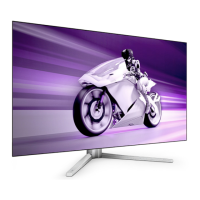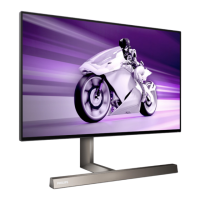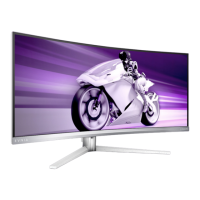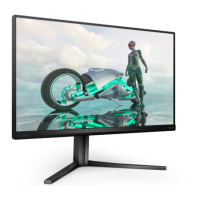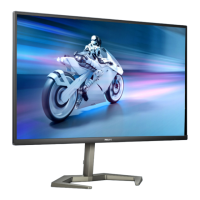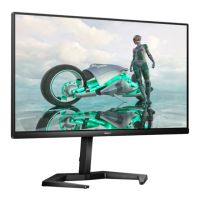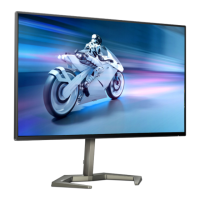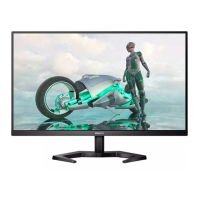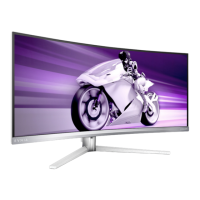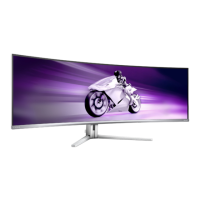
Do you have a question about the Philips Evnia 49M2C8900 Series and is the answer not in the manual?
Covers crucial safety guidelines and maintenance procedures for the monitor's operation and longevity.
Explains the meaning of icons, notes, cautions, and warnings used throughout the user manual.
Provides instructions for the environmentally responsible disposal of the monitor and its packaging.
Guides users through the physical setup and installation process of the monitor.
Explains how to use the monitor's physical control buttons and the remote control.
Provides instructions for safely removing the monitor's base for VESA mount installation.
Explains the KVM switch feature allowing control of two PCs with one set of peripherals.
Details the setup process for using the MultiClient Integrated KVM functionality.
Introduces the MultiView feature for displaying multiple content sources simultaneously.
Guides users on activating MultiView through the monitor's OSD menu.
Step-by-step guide on how to activate and configure the EasyLink (CEC) functionality.
Explains how to use the monitor's single toggle button for navigating the OSD menu.
Provides an overview of the OSD menu structure for reference during adjustments.
Details the SmartImage presets for optimizing display settings based on content type.
Provides instructions on accessing and selecting SmartImage modes via the OSD.
Instructions on activating and using the Smart Power feature for power delivery.
Details how to use the USB-C port for power delivery, including levels and conditions.
Guides on activating and configuring Ambiglow settings through the OSD menu.
Explains the screen saver function to protect the panel from static image retention.
Describes the pixel orbiting feature that shifts pixels to prevent sticking.
Explains the automatic pixel refresh process to maintain panel quality.
Recommends optimal environmental lighting conditions for reduced eye strain.
Provides tips on taking breaks and practicing good habits to prevent fatigue.
Offers guidance on setting up an ergonomic working posture for comfort.
Highlights Philips monitor features designed for eye comfort and reduced strain.
Lists specifications related to the monitor's visual performance, resolution, and panel type.
Details the available input/output ports and connection types supported by the monitor.
Specifies the USB ports, power delivery capabilities, and data transfer speeds.
Lists the supported resolutions and corresponding horizontal/vertical frequencies and preset modes.
Defines the different power management modes, power usage, and LED status indicators.
Details the manufacturer's policy regarding acceptable levels of pixel and sub-pixel defects for warranty claims.
Categorizes and describes various types of pixel and sub-pixel defects, including bright and dark dots.
Explains bright dot defects where sub-pixels remain constantly lit, defining their types and acceptable levels.
Explains black dot defects where sub-pixels remain constantly dark, defining their types and acceptable levels.
Addresses tolerances for pixel defects that are close to each other, impacting noticeability.
Lists the acceptable levels for pixel and sub-pixel defects required for warranty repair or replacement.
Provides information on how to access customer support, warranty periods, and extended warranty options.
Provides guidance for users to resolve common issues with the monitor's display and functionality.
Addresses issues like no picture, power LED status, and cable problems.
Resolves visual issues such as image centering, vibration, and flickering.

